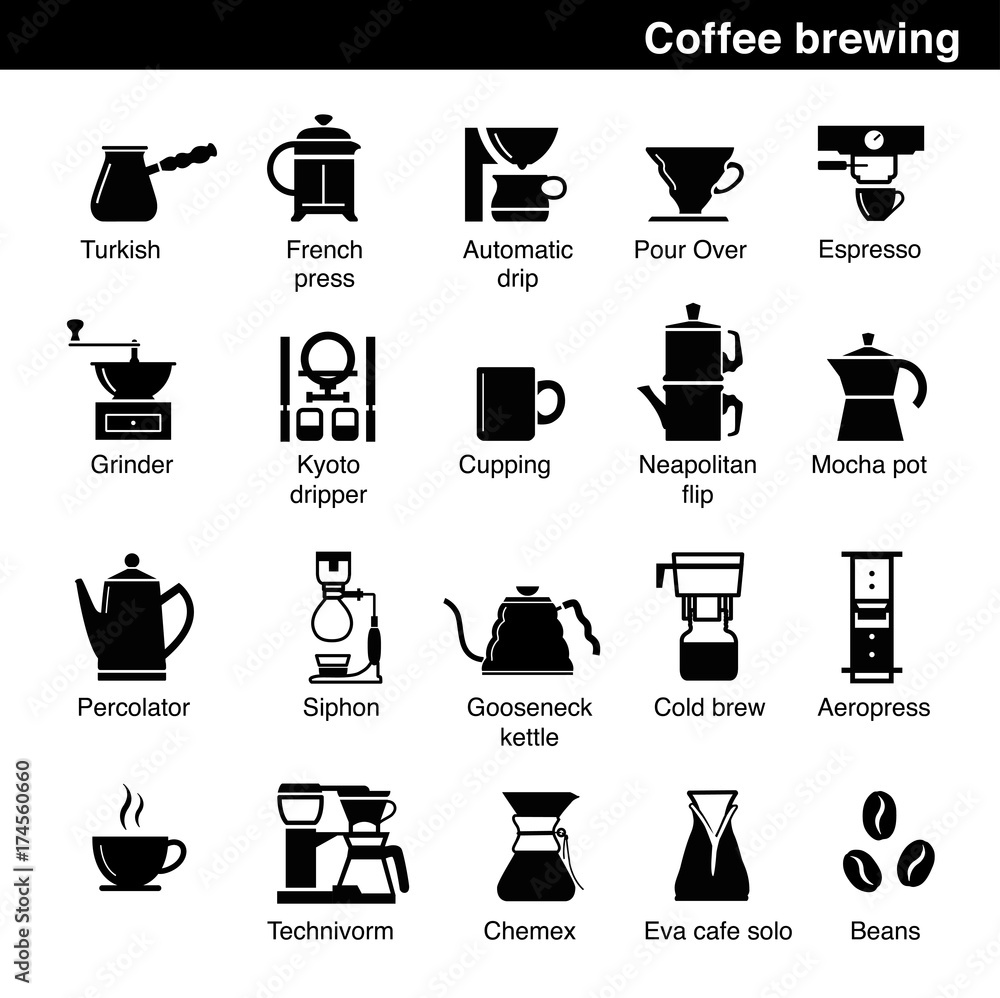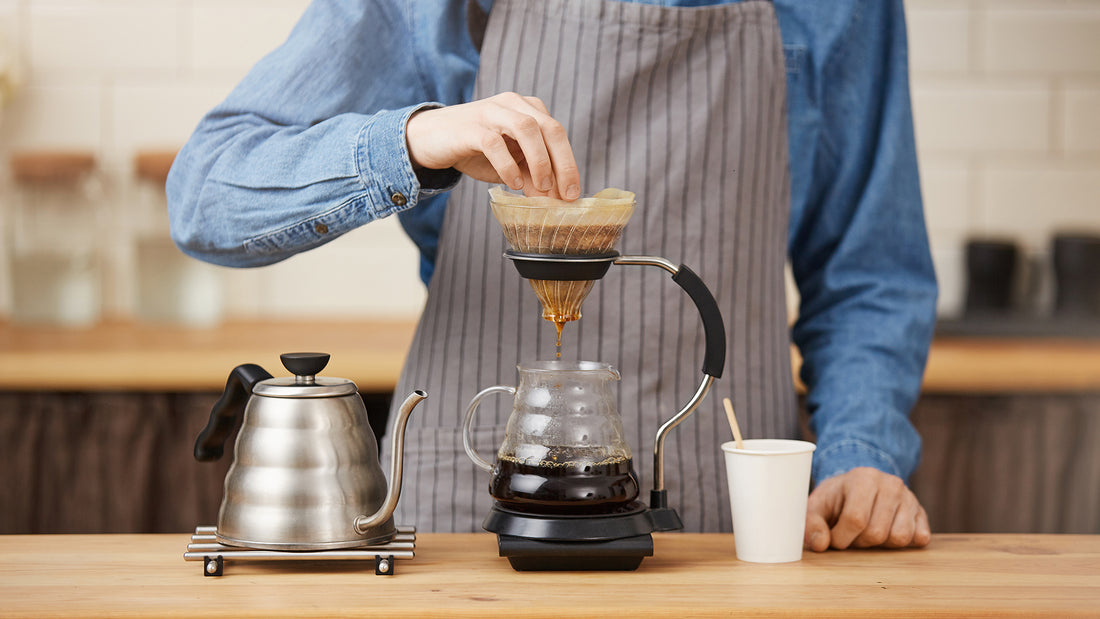The Effect of Different Coffee Brewing Methods on Taste and Aroma
The Effect of Different Coffee Brewing Methods on Taste and Aroma
Blog Article
Recognizing Various Coffee Developing Approaches for a Richer Flavor Experience
A thorough understanding of different coffee brewing techniques can greatly affect your flavor experience, disclosing the elaborate subtleties of this cherished drink. As you consider which come close to best suits your preference preferences, the question stays: just how do these methods affect the last mug, and which might raise your coffee experience to new elevations?
Drip Coffee Manufacturer
While several coffee fanatics value the nuances of different developing techniques, the drip coffee maker remains a staple in homes and offices because of its simpleness and performance. This appliance operates by heating water and allowing it to flow through coffee premises, removing flavors and oils, which after that trickle into a pitcher listed below.
The drip coffee machine is preferred for its capacity to brew several mugs at the same time, making it optimal for busy mornings or gatherings. Individuals can quickly customize the strength of their coffee by readjusting the amount of coffee grounds used or selecting a mixture stamina setting found in many contemporary devices. In addition, programmable attributes enable customers to establish a timer, ensuring a fresh pot of coffee prepares upon waking.
Maintenance is relatively simple, as the majority of drip coffee makers call for periodic cleansing to eliminate mineral build-up. Lots of designs are also furnished with features such as auto shut-off, which enhances safety and security and power effectiveness. Ultimately, the drip coffee machine uses a user-friendly and reliable choice for those looking for a constant and satisfying coffee experience without the intricacies of even more sophisticated brewing approaches.

French Press
The French press provides a distinct developing experience that contrasts sharply with the computerized process of a drip coffee machine. This manual technique allows for an intimate communication with the coffee-making procedure, offering individuals greater control over numerous parameters, such as steeping time, coffee-to-water ratio, and grind size.
To brew coffee using a French press, coarsely ground coffee beans are steeped in warm water for approximately 4 mins. This immersion method removes abundant oils and flavors from the coffee, causing a robust drink that highlights the subtleties of the beans utilized. The steel or nylon mesh filter of the French press enables necessary oils to remain in the mixture, adding to its robust taste profile.
When using a French press, it is necessary to take notice of the brewing time and water temperature, as these aspects dramatically influence the final taste. Experimentation with different coffee selections and soaking durations can lead to a tailored flavor experience. On the whole, the French press is a satisfying and obtainable technique for coffee enthusiasts seeking to grow their admiration for the intricacies of their favorite beverage.
Pour-Over Techniques
Pour-over methods elevate the coffee brewing experience by allowing accurate control over every element of the process, from water temperature level to putting pop over to these guys strategy. This technique entails manually putting warm water over coffee premises in a filter, typically situated in a dripper, which permits optimum removal of tastes.
To start, picking the appropriate coffee work is important; a tool to medium-fine grind functions best to make sure correct water circulation and extraction (coffee brewing methods). Next, water temperature need to ideally vary in between 195 ° F and 205 ° F, as this array extracts the very best tastes without scalding the coffee
The pouring strategy also plays an essential function. A slow-moving, round motion when saturating the premises can help equally remove oils and tastes. It's frequently suggested to enable the coffee to flower for 30 secs after the initial pour, which allows co2 retreat and boosts taste growth.
Espresso Devices
For those seeking coffee brewing methods a various yet equally gratifying brewing experience, espresso makers offer an one-of-a-kind technique of coffee prep work that highlights pressure removal. This procedure involves requiring warm water with finely-ground coffee at roughly 9 bars of stress, causing a focused shot of coffee that showcases abundant flavors and fragrances.

The high quality of espresso is influenced by numerous factors, consisting of work size, dose, water temperature, and extraction time. Attaining the perfect espresso shot needs method and focus to information. Furthermore, the coffee functions as a base for different coffee drinks, such as lattes, coffees, and Americanos, making it a functional choice for coffee lovers.

Cold Mixture Methods
Cold brew coffee has gained appeal for its smooth, low-acidity profile and revitalizing taste, making it a suitable selection for cozy climate or those sensitive to traditional brewing approaches - coffee brewing methods. The process of cold brewing commonly entails steeping coarsely ground coffee beans in cool or room temperature water for an extended duration, normally 12 to 24 hours. This approach extracts tastes differently than warm water, leading to an abundant, complex brew that highlights chocolatey and fruity notes
There are various chilly brew methods available, including immersion and drip brewing. The immersion method is one of the most simple; merely integrate coffee and water in a container, allow it high, and after that strain the grounds. On the other hand, the drip approach uses a specialized coffee manufacturer to gradually trickle water with coffee premises, permitting an extra regulated extraction procedure.
No matter the method selected, the coffee-to-water proportion is critical, typically recommended at 1:4 for a concentrated brew that can be thinned down with water or milk prior to serving (coffee brewing methods). Cold brew can be served over ice, combined with flavorful syrups, or used as a base for numerous coffee drinks, supplying versatility and a distinct taste experience
Conclusion
In final thought, exploring numerous coffee brewing techniques dramatically enriches the flavor experience. Engaging with these diverse developing refines not just improves admiration for coffee's intricacy but additionally encourages people to tailor their coffee pleasure according to personal choices.
Customers can quickly customize the stamina of their coffee by adjusting the amount of coffee premises utilized or selecting a mixture toughness setting located in many modern-day equipments. Inevitably, the drip coffee manufacturer provides a trustworthy and see page easy to use alternative for those looking for a consistent and pleasurable coffee experience without the intricacies of even more sophisticated developing approaches.
To make coffee using a French press, coarsely ground coffee beans are steeped in hot water for around four mins. Alternatively, the drip technique uses a specialized coffee manufacturer to slowly leak water via coffee premises, permitting for a more controlled extraction process.
Involving with these diverse developing processes not just boosts appreciation for coffee's intricacy however also empowers individuals to customize their coffee pleasure according to personal preferences.
Report this page